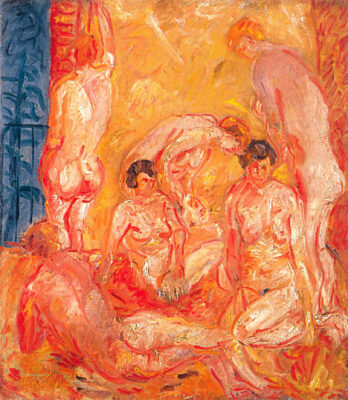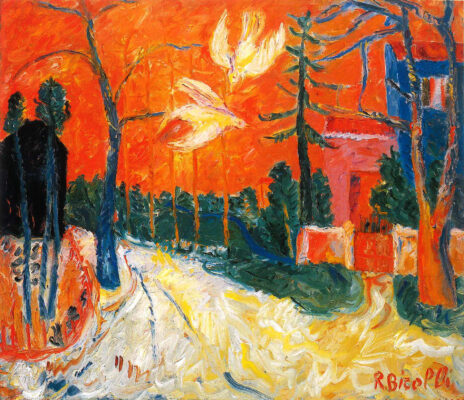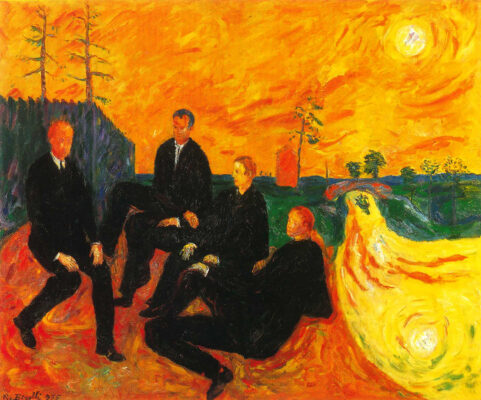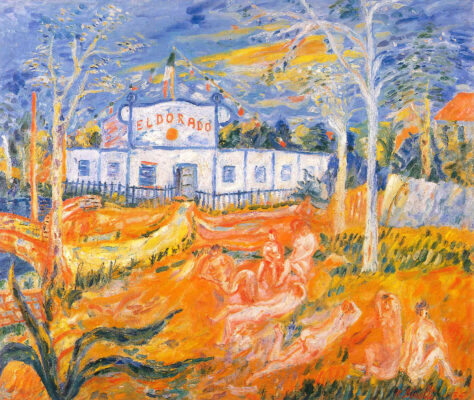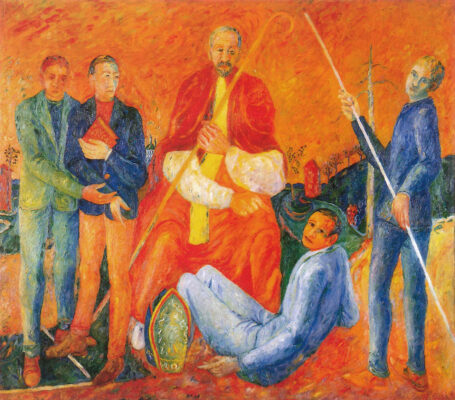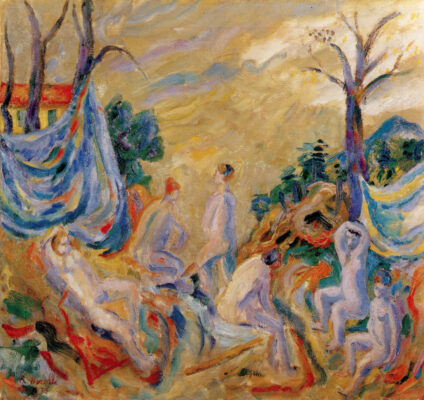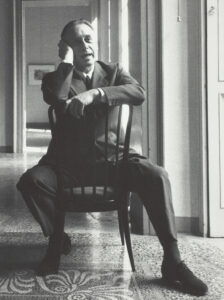Home / Exhibitions / Renato Birolli 1935
Renato Birolli 1935
curated by Fabrizia Lanza Pietromarchi
18.10.1996 — 23.11.1996
Renato Birolli 1935
curated by Fabrizia Lanza Pietromarchi
18.10.1996 - 23.11.1996Show introduction
From October 18, 1996 an exhibition focused on a crucial year in the research by Renato Birolli, 1935, was held at the Galleria dello Scudo, when new symbolisms and audacious tonal juxtapositions testified to the abandonment of the poetics stimulated by the artist’s relationship with Edoardo Persico and the start of a phase marked by a use of colour with strong expressionist values. With a selection of forty works from public and private collections, the exhibition documents the transition from his period linked to Lombard “chiarismo” to the subsequent “Corrente” experience.
The show was introduced by certain paintings from 1933, among which the La Maddalena nel deserto, still linked the “primitive” themes with a religious inspiration, and Piccolo gineceo in which the fields of paint were disturbed by vigorous and uneasy handling. Le colombe al tramonto, a masterpiece from the following year, was proposed to the public after having been exhibited in the U.S.A. in 1935 and Venice in 1938.
The section dedicated to the year examined by the exhibition was introduced by crucial works such as I Poeti and La nuova Ecumene, which were flanked with an abundant series of pastels, in part previously unseen, almost exclusively devoted to the figure. The nervous marks, already pushed to the limits in Eldorado in the Civiche Raccolta d’Arte, Milan, distinguished the two canvases from 1936, Il Caos and L’età felice. The exhibition was rounded off by the first Metamorfosi series, created in the same year: sixteen inks on paper never previously exhibited as a complete series, and dating back to the artist’s first journey to Paris.
The show, undertaken thanks to the fundamental contribution of Rosa, Marco, and Zeno Birolli, was curated by Fabrizia Lanza Pietromarchi. The catalogue published for the occasion contains a precious contribution by Francesco Battoli and is enhanced by the publication of the correspondence with the critic Giuseppe Marchiori from 1934 to 1936. The volume is rounded off by a biography specific to this period edited by Laura Lorenzoni.
